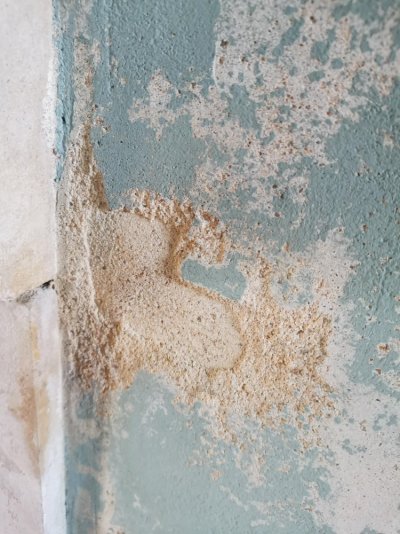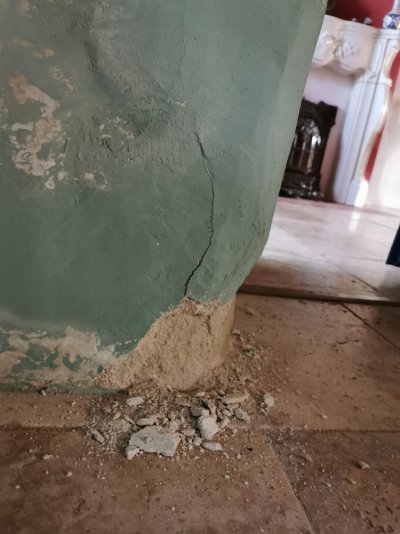Hello
I am about to redecorate (limewash ceiling and re-clay-paint walls) and am looking at my options to patch damage to the walls.
This was one of my first attempts at plastering about 15 yrs ago and I made quite a few errors (I now think/realise) but also we have had a leak around the chimney stack which has taken years to resolve and have a concrete slab (which sadly has to stay financially and practically).
The first pics show the area around the chimney - just the top layer of plaster has detatched (I made the mistake of trying to plaster when it was 40°C outside and it just dried too quick.) ALTHOUGH there are quite a few patches where it is blown, it is holding solid, I believe, due to the horse hair in the plaster.
These little bits I thought to use modern filler which can be sanded and painted over.
Around the doorway I plastered too deep with Non -hydraulic lime and the concrete slab has created damp in the walls at this point. For this area I am wondering what to do!! If I start removing until I get to solid plaster I fear it will be a lot, do I patch with hydraulic or non hydraulic? . I'm not really ready to start replastering a huge area as I have too much else to do at the moment, also I'm hoping the rest will hold and I can get away with a small repair!
I also have not worked out how to patch lime and get a smooth joint that won't show once painted - ?? where I have tried I am left with the rough effect of the sand in the plaster at the joint.
All thoughts would be welcome please.


I am about to redecorate (limewash ceiling and re-clay-paint walls) and am looking at my options to patch damage to the walls.
This was one of my first attempts at plastering about 15 yrs ago and I made quite a few errors (I now think/realise) but also we have had a leak around the chimney stack which has taken years to resolve and have a concrete slab (which sadly has to stay financially and practically).
The first pics show the area around the chimney - just the top layer of plaster has detatched (I made the mistake of trying to plaster when it was 40°C outside and it just dried too quick.) ALTHOUGH there are quite a few patches where it is blown, it is holding solid, I believe, due to the horse hair in the plaster.
These little bits I thought to use modern filler which can be sanded and painted over.
Around the doorway I plastered too deep with Non -hydraulic lime and the concrete slab has created damp in the walls at this point. For this area I am wondering what to do!! If I start removing until I get to solid plaster I fear it will be a lot, do I patch with hydraulic or non hydraulic? . I'm not really ready to start replastering a huge area as I have too much else to do at the moment, also I'm hoping the rest will hold and I can get away with a small repair!
I also have not worked out how to patch lime and get a smooth joint that won't show once painted - ?? where I have tried I am left with the rough effect of the sand in the plaster at the joint.
All thoughts would be welcome please.


